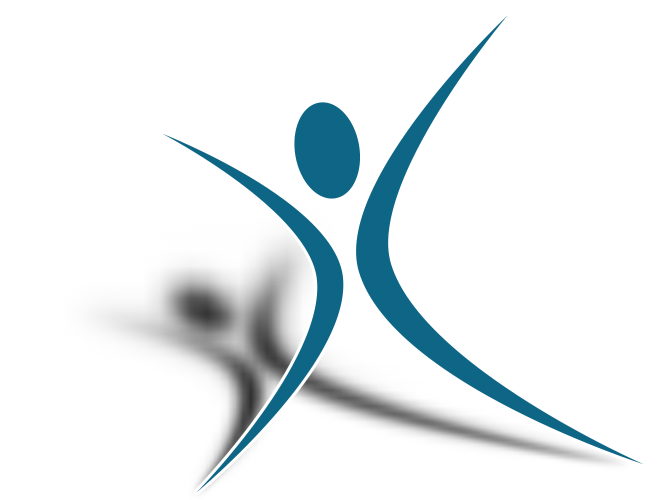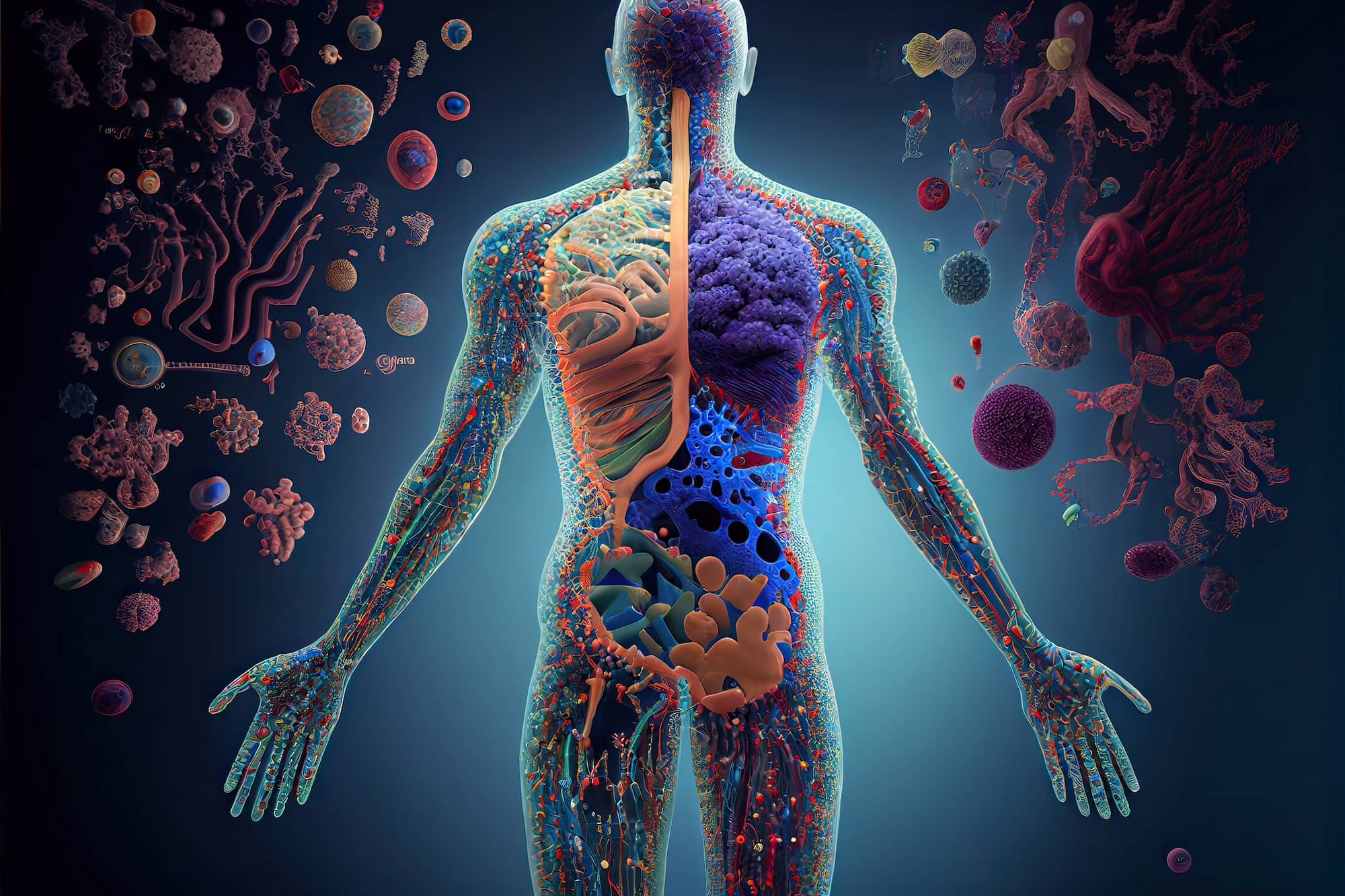Blog
Age Smarter
Aging is a natural part of life, but how we age is largely up to us. While genetics play a role, your daily habits and lifestyle choices have a much greater impact. One often-overlooked factor in healthy aging is spinal health — and that’s where we come in.
Your spine does far more than support your posture. It’s the communication highway between your brain and body. When your spine is properly aligned, your nervous system functions at its best, helping every organ, muscle, and cell stay in sync. This is essential for maintaining balance, strength, coordination, and even mental clarity as you age.
Over time, stress, injuries, and poor posture can create misalignments, or subluxations, in the spine. These subtle shifts can interfere with nerve function, leading to stiffness, pain, fatigue, and slower recovery. Regular chiropractic adjustments restore proper alignment, allowing your body to move more freely and efficiently.
One of the biggest benefits of chiropractic care for older adults is improved mobility. When joints move the way they should, it’s easier to stay active — and activity is the foundation of longevity. Chiropractic adjustments help reduce inflammation, relieve tension, and keep your range of motion strong, so you can continue doing the things you love.
It also supports balance and coordination by ensuring the brain receives accurate signals from the body. This can lower your risk of falls and help you stay confident and independent as you age.
Healthy aging isn’t about avoiding time — it’s about maximizing it. By keeping your spine aligned and your nervous system healthy, Dr. Basco helps your body function the way it was designed to. Combined with good nutrition, regular movement, and mindful stress management, it’s one of the most natural ways to stay youthful and strong.
Aging smarter starts with how you care for your spine. Regular chiropractic adjustments can help you move better, feel better, and live better — no matter your age.
Click here to contact Dr. Basco or call 510-523-6773
Boost Your Energy!
Feeling tired all the time isn’t just about getting too little sleep. Low energy can come from stress, poor posture, and even spinal misalignments that affect how your nervous system functions. Many people are surprised to learn that regular chiropractic care may help restore energy naturally by improving the way your body works as a whole.
Your spine does more than support your body — it also protects the nervous system. When the spine is out of alignment, it can create stress on the nerves, muscles, and joints. This extra tension uses up energy that your body could be directing toward healing, focus, and daily activity. Chiropractic adjustments help restore proper alignment, reducing this strain and allowing your nervous system to function more efficiently.
Poor spinal alignment can lead to muscle tightness, pain, and restless sleep. Without quality rest, it’s nearly impossible to feel energized the next day. By correcting imbalances, chiropractic care may help improve sleep quality, so your body can recover and recharge the way it’s meant to.
When your body moves freely, it doesn’t have to work as hard. Adjustments can ease joint restrictions and improve circulation, which helps deliver oxygen and nutrients more effectively throughout the body. The result? Less fatigue and more stamina to get through your day.
Stress doesn’t just affect your mood — it also drains energy. Chiropractic adjustments support the parasympathetic nervous system, the part of your body responsible for rest and recovery. By calming tension and reducing stress, chiropractic care helps free up energy you may not even realize you were losing.
A Natural Energy Boost
While coffee or energy drinks provide a temporary fix, chiropractic care focuses on improving the root causes of fatigue. By aligning your body and supporting your nervous system, adjustments may give you a lasting boost in energy that helps you feel more alert, productive, and balanced.
Click here to contact Dr. Basco or call 510-523-6773
Beyond Stretching
Chiropractic Care for Desk Workers
If you spend long hours at a desk, you know the toll it takes on your body. Tight shoulders, a stiff neck, and an aching back become part of daily life. Many people turn to stretching for quick relief, but the truth is simple—lasting relief goes beyond stretching. That’s where chiropractic care makes the difference.
Sitting for extended periods compresses the spine and restricts natural movement. Over time, poor posture, slouching, and repetitive strain build up tension and misalignment. Stretching provides a short burst of comfort, but it doesn’t correct spinal imbalances or restore function. Relief beyond stretching means addressing the root cause, not just the symptom.
Chiropractic adjustments target these underlying issues. By realigning the spine, chiropractors release pressure from joints and nerves, allowing the body to move the way it was designed. This not only eases pain but also improves circulation, reduces stiffness, and restores energy. Many desk workers notice sharper mental focus and less fatigue once their spine functions properly.
Another key benefit is posture correction. Desk jobs encourage slumping shoulders and forward head posture, both of which contribute to recurring neck and back pain. With regular chiropractic care, your body naturally holds itself straighter, making it easier to maintain healthy alignment throughout the day. Improved posture also means fewer headaches, better breathing, and less strain on your muscles.
Relief beyond stretching also involves pairing chiropractic adjustments with small lifestyle changes. Stand up at least once an hour, adjust your chair and monitor to support neutral posture, and stay hydrated throughout the day. These simple habits work hand-in-hand with chiropractic care to keep your body resilient against the demands of desk work.
When you invest in chiropractic care, you give your body more than temporary relief. You give it the ability to heal, reset, and prevent future discomfort. If sitting at a desk leaves you stiff, sore, and searching for solutions, remember this—relief beyond stretching is possible, and chiropractic care can help you get there.
Click here to contact Dr. Basco or call 510-523-6773
Allergies
Allergy Season & the Spine: Can Chiropractic Help?
As spring arrives, so do itchy eyes, runny noses, and endless sneezing. Allergy season is in full swing, and for many, it can feel like a losing battle. While over-the-counter medications offer temporary relief, they often come with unwanted side effects. Fortunately, chiropractic care provides a natural approach that may help your body handle allergies more effectively—starting with your spine.
Your Nervous System and Allergies
Your spine protects your nervous system, which controls every function in your body—including your immune and respiratory systems. When spinal misalignments (subluxations) occur, they can disrupt nerve signals and weaken your body’s ability to respond to allergens. This interference may cause your immune system to overreact to common triggers like pollen, dust, or pet dander.
Chiropractic adjustments restore proper spinal alignment, helping your nervous system function at its best. A healthier nervous system supports a more balanced immune response, reducing the severity of allergic reactions.
Breathe Easier with Chiropractic Care
Many allergy sufferers also experience sinus congestion, inflammation, and pressure. Misalignments in the upper cervical spine can contribute to tension around the sinuses, making symptoms worse. Gentle chiropractic adjustments can relieve this pressure, promote sinus drainage, and improve airflow.
Patients often report breathing easier and feeling more energized after consistent chiropractic care during allergy season.
Natural Relief Without Side Effects
Unlike allergy medications that cause drowsiness or dryness, chiropractic care works with your body—not against it. Regular adjustments, combined with a healthy lifestyle, can help reduce your dependence on medication and minimize side effects.
Chiropractors may also recommend nutritional support and lifestyle changes that reduce inflammation and strengthen your immune system. Hydration, vitamin C, omega-3 fatty acids, and avoiding processed foods are all simple steps that support your body’s natural defenses.
Take Control of Allergy Season
You don’t have to suffer through spring. Chiropractic care offers a drug-free, holistic approach to managing allergies by supporting the systems that keep your body balanced and resilient. If you’re tired of relying on pills and sprays, consider visiting your chiropractor this allergy season.
A well-aligned spine can make a big difference in how your body responds to environmental stress. Schedule your adjustment today and take a proactive step toward a healthier, symptom-free spring.
Click here to contact our Office or call 510-523-6773
Chiropractic & Fertility
Chiropractic & Fertility: How Spinal Alignment Supports Reproductive Health
Many couples struggling with fertility may not realize that spinal alignment plays a crucial role in reproductive health. The nervous system controls every function in the body, including the reproductive organs. When the spine is misaligned, particularly in the pelvis and lower back, it can interfere with nerve signals, disrupt hormone balance, and contribute to difficulties in conception.
The Connection Between the Spine and Reproductive Health
The spine houses the nervous system, which communicates with every organ, including the uterus, ovaries, and other reproductive structures. Misalignments, or subluxations, in the lower spine and pelvis can create tension and imbalances that may hinder reproductive function. By restoring proper alignment, chiropractic adjustments can help optimize the body’s natural ability to conceive.
How Chiropractic Care Supports Fertility
- Pelvic Alignment – A misaligned pelvis can lead to tension in the surrounding muscles and ligaments, restricting blood flow and nerve communication to reproductive organs. Chiropractic adjustments help create a balanced and open pelvic environment, increasing the chances of conception.
- Hormonal Balance – The nervous system regulates hormone production, which is essential for ovulation and a healthy menstrual cycle. Chiropractic care helps remove nerve interference, allowing the body to regulate hormones more effectively.
- Improved Blood Flow – Proper circulation to the reproductive organs is vital for fertility. Chiropractic adjustments can enhance blood flow by relieving tension and improving alignment in the spine and pelvis.
- Reduced Stress – Stress plays a significant role in fertility struggles, as high cortisol levels can disrupt reproductive hormones. Chiropractic care promotes relaxation, reduces tension, and supports overall well-being, helping to create a more favorable environment for conception.
Real Results: Chiropractic Success Stories
Chiropractic care has contributed to numerous successful pregnancies. We’ve seen cases where women struggling with fertility conceived after receiving chiropractic adjustments. By aligning the pelvis, hips, and spine, we helped optimize their body’s natural reproductive function, leading to positive outcomes.
Chiropractic Care: A Natural Approach to Fertility
If you or someone you know is facing fertility challenges, chiropractic care may be a valuable addition to your wellness routine. By ensuring the spine and nervous system are functioning at their best, you can support your body’s natural ability to conceive.
Schedule a consultation today to explore how chiropractic adjustments can help you on your journey to parenthood!
Click here to contact our Office or call 510-523-6773
Heart Health
Heart Health & Chiropractic: The Surprising Connection
February is Heart Health Month, a time to focus on cardiovascular wellness and the steps we can take to keep our hearts strong. While diet and exercise are well-known factors in heart health, one often-overlooked contributor is spinal alignment. Proper spinal health plays a crucial role in circulation, nerve function, and overall cardiovascular well-being. Here’s how chiropractic care can support a healthier heart.
The Spine’s Role in Circulation
The spine houses and protects the central nervous system, which controls every function in the body, including heart rate and circulation. Misalignments in the spine, known as subluxations, can create nerve interference, disrupting signals between the brain and heart. This interference may contribute to issues such as poor circulation, increased blood pressure, and even heightened stress levels—factors that all impact heart health.
Chiropractic Care and Blood Pressure Regulation
Research has shown that spinal adjustments, particularly in the upper cervical spine, can help regulate blood pressure. A study published in the Journal of Human Hypertension found that a specific chiropractic adjustment to the atlas vertebra resulted in significant reductions in blood pressure, comparable to the effects of some blood pressure medications. By restoring proper alignment, chiropractic care may help support cardiovascular function naturally.
Reducing Stress for a Healthier Heart
Chronic stress is a major contributor to heart disease. When the body is under stress, it releases cortisol and adrenaline, which can increase heart rate and blood pressure. Chiropractic care has been shown to reduce stress levels by improving nervous system function and promoting relaxation. Many patients report feeling a sense of calm and balance after an adjustment, which can have positive effects on heart health over time.
Enhancing Circulation and Mobility
Spinal misalignments can lead to muscle tension, restricted movement, and poor circulation. Chiropractic adjustments help improve blood flow by relieving pressure on nerves and blood vessels. Better circulation means that oxygen and nutrients are more efficiently delivered throughout the body, supporting cardiovascular health and overall vitality.
Prioritize Your Heart Health This Month
This Heart Health Month, consider chiropractic care as part of your wellness routine. By ensuring your spine is properly aligned, you’re not only supporting a healthier nervous system but also promoting better circulation, reduced stress, and improved heart function.
Schedule a chiropractic visit today and take a proactive step toward a healthier heart and a healthier you!
Click here to contact our Office or call 510-523-6773
Health Goals for the New Year
It’s the perfect time to set fresh health goals and prioritize your well-being. Whether you want to exercise more, lose weight, or simply feel better in your daily life, chiropractic care can help you succeed. By focusing on improving your body’s function, chiropractic adjustments make movement easier, reduce pain, and help you achieve lasting results.
Many people start the year motivated, but physical discomfort or stiffness can quickly derail even the best intentions. That’s where chiropractic care steps in. Regular adjustments enhance spinal alignment, improve joint mobility, and optimize nervous system function. When your body functions at its best, pain naturally decreases, and energy levels rise. This improvement makes it easier to stick with exercise routines and other healthy habits.
Imagine starting your mornings pain-free, ready to tackle workouts, yoga sessions, or long walks without hesitation. Chiropractic care reduces tension, improves flexibility, and supports proper posture, allowing your body to move fluidly and comfortably. Small changes, like maintaining better posture or stretching consistently, create a foundation for bigger health transformations.
Chiropractic care also helps prevent injuries that can sideline your progress. Misalignments often lead to imbalances that put extra strain on muscles and joints. Regular adjustments correct these issues, keeping your body balanced and resilient. With fewer aches and pains holding you back, it becomes easier to maintain momentum and stay active throughout the year.
Additionally, chiropractic adjustments support mental clarity and stress relief. As your body relaxes, tension fades, and you feel more focused and positive. When your mind and body work together harmoniously, you’re better equipped to set and achieve meaningful health goals.
This year, let chiropractic care be your partner in building a healthier lifestyle. Start with a simple step—schedule an adjustment to assess your current alignment and create a personalized plan for success. As function increases, pain decreases, opening the door to greater possibilities and a more vibrant life.
Don’t let discomfort keep you from reaching your full potential. Embrace the new year with confidence, knowing chiropractic care can help you feel and move better every day. Make this year the one where you achieve your health goals and thrive!
Click here to contact our Office or call 510-523-6773
Travel Tips for Thanksgiving
Staying Comfortable with Chiropractic Support:
Thanksgiving is a time for family gatherings, but for many, it also means long hours of travel by car, plane, or train. These journeys can take a toll on your body, especially your spine and joints. Fortunately, chiropractic care can help you stay comfortable and pain-free during your holiday travel.
Travel tips before hitting the road should include scheduling a chiropractic adjustment. A properly aligned spine ensures better posture, reduces tension, and optimizes your body’s ability to handle prolonged sitting. Chiropractors can also recommend stretches and exercises tailored to your specific needs, keeping your muscles relaxed and your joints mobile during the journey.
During travel, it’s essential to maintain good posture to avoid back and neck strain. Use a supportive travel pillow to keep your neck aligned and take breaks to stretch and move around every hour or so. If you’re driving, adjust your seat to support your lower back, and if flying, opt for an aisle seat to have more freedom to stretch. Staying hydrated is equally important, as proper hydration keeps your joints lubricated and your muscles flexible.
Once you arrive at your destination, it’s common to feel stiff or fatigued. Gentle stretches or yoga can help release built-up tension, while a chiropractic adjustment post-travel can address any lingering discomfort. Chiropractic care not only alleviates pain but also enhances circulation and reduces inflammation, helping you recover faster and fully enjoy your Thanksgiving celebrations.
This Thanksgiving, don’t let travel woes ruin your holiday spirit. Use these Travel tips and include chiropractic support into your travel routine, you can arrive at your destination feeling relaxed and ready to embrace the festivities. Chiropractic care offers a proactive way to maintain your health and comfort, making your holiday travel a breeze. Schedule your appointment today and give thanks for a pain-free journey.
Click here to contact our Office or call 510-523-6773
Halloween
Halloween brings excitement with trick-or-treating, costumes, and festive activities, but it can also put stress on your spine. Whether you’re walking long distances with your kids, carrying heavy bags of candy, or setting up decorations, it’s essential to protect your back and posture during these fun events. Here are some chiropractic tips to help you enjoy Halloween without unnecessary aches and pains.
1. Use a Backpack or Rolling Bag for Candy
Carrying heavy bags of candy in one hand can strain your shoulders and spine. Opt for a backpack to distribute the weight evenly or use a small rolling bag to reduce stress on your body. If kids are carrying candy, check their bags periodically to ensure they’re not too heavy for their size.
2. Wear Supportive Shoes
If you’re out trick-or-treating, you’ll likely walk a lot. Avoid footwear that lacks support, like flip-flops or flat shoes, which can lead to foot pain and misalignment in your spine. Choose cushioned, supportive shoes that will keep you comfortable and protect your posture throughout the night.
3. Stretch Before and After Walking
Long walks, especially in the cold, can tighten muscles and leave you stiff. Take a few minutes to do some light stretching before heading out. After the festivities, stretch again to keep your muscles loose and prevent back or joint pain.
4. Lift Decorations Properly
When lifting pumpkins or other heavy Halloween decorations, use your legs, not your back. Bend your knees, keep the object close to your body, and avoid twisting your torso. These simple adjustments will reduce the risk of back strain.
5. Take Breaks to Prevent Fatigue
If you’re walking through neighborhoods or setting up elaborate decorations, remember to take breaks. Fatigue can lead to poor posture and increase the risk of injury. Give yourself time to rest, hydrate, and stretch if needed.
6. Schedule a Chiropractic Adjustment
Even with precautions, festive activities can take a toll on your body. A chiropractic adjustment can realign your spine, relieve tension, and prevent minor aches from turning into chronic problems.
By following these tips, you can keep your spine healthy and enjoy all the fun Halloween has to offer. Stay active, but protect your body to ensure a pain-free, festive season!
Click here to contact our Office or call 510-523-6773
Immune Function
Chiropractic care, often associated with relieving back pain and improving spinal health, plays a more significant role in overall wellness than many realize. Recent research highlights how chiropractic adjustments can boost immune function, providing a holistic approach to health that goes beyond pain management.
The immune system is our body’s defense against infections and diseases. It works tirelessly to identify and destroy harmful invaders like bacteria and viruses. However, a compromised or weakened immune system can lead to increased susceptibility to illnesses. This is where chiropractic care steps in.
The central nervous system, which includes the brain and spinal cord, controls every function in our body, including the immune system. When the spine is misaligned, it can disrupt the communication between the nervous system and the immune system, potentially weakening the body’s ability to fend off illness. Chiropractic adjustments correct these misalignments, or subluxations, restoring proper nerve function and, consequently, enhancing immune response.
Several studies support the connection between chiropractic care and improved immune function. For instance, research published in the Journal of Manipulative and Physiological Therapeutics found that chiropractic adjustments can influence specific immune system components, such as increasing the production of white blood cells. White blood cells are crucial for fighting infections, and an increase in their production suggests a more robust immune response.
Another study conducted by Dr. Ronald Pero, a leading cancer prevention researcher, revealed that individuals who received regular chiropractic care had a 200% greater immune competence than those who didn’t. His findings suggest that spinal adjustments may not only help maintain a well-functioning immune system but also potentially protect against illnesses.
Chiropractic care promotes overall wellness by reducing stress.
Stress is known to weaken the immune system. Chronic stress leads to the release of cortisol, a hormone that can suppress immune function. By alleviating physical stress through spinal adjustments, chiropractic care helps to lower cortisol levels, thereby supporting a stronger immune system.
Incorporating chiropractic care into your wellness routine is a proactive step towards enhancing your body’s natural defense mechanisms. Regular adjustments can keep your spine aligned, ensuring that your nervous system communicates effectively with your immune system. As a result, your body is better equipped to prevent illness and maintain optimal health. With the backing of emerging research, chiropractic care stands out as a powerful tool in supporting and boosting immune function, offering a holistic approach to staying healthy year-round.
Click here to contact our Office or call 510-523-6773










